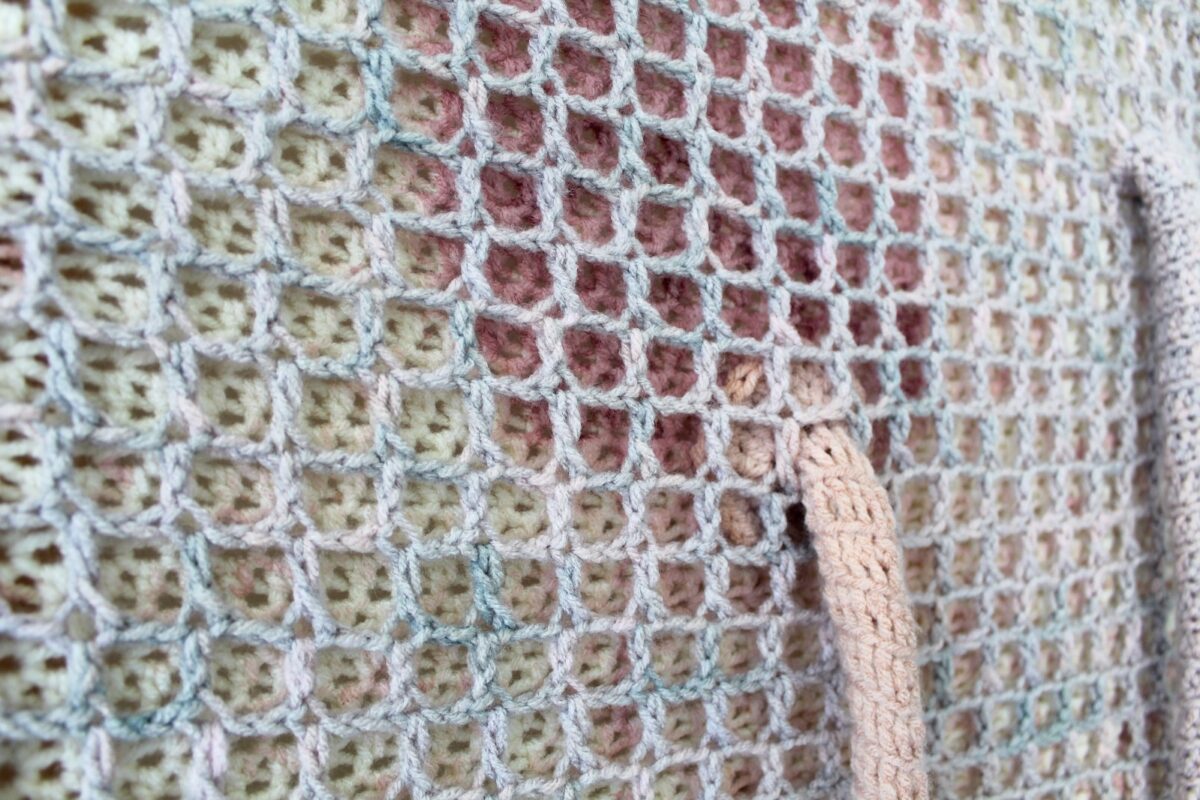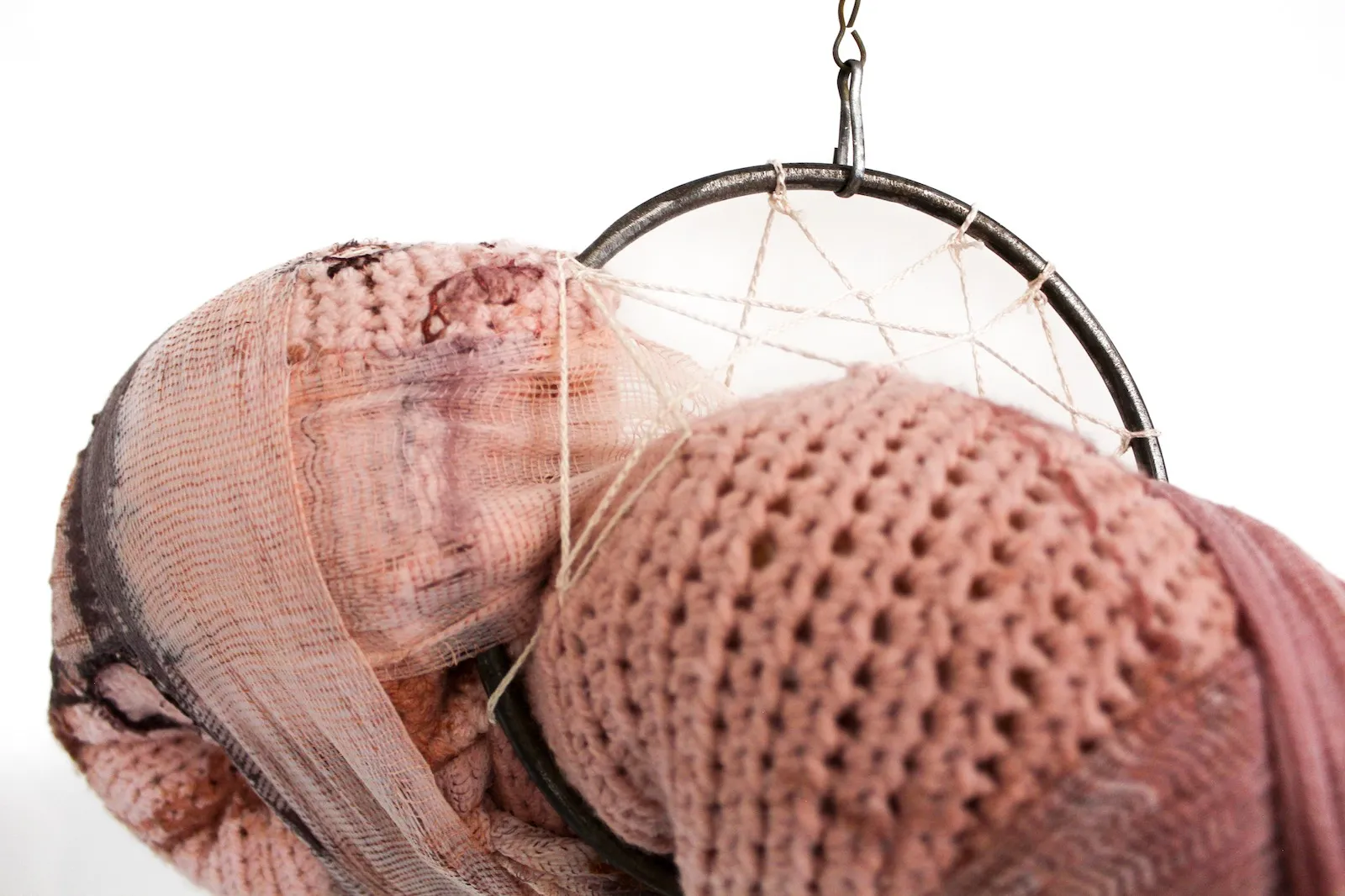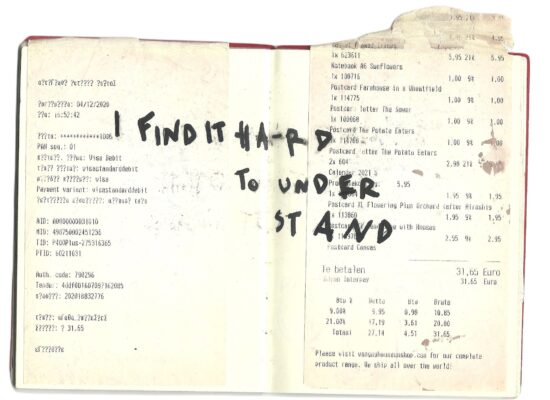Based in New York City
Website https://ceaseandperish.com
Research project The Dialectic of Airless Space
Location Rhode Island School of Design, Providence Rhode Island
Can you describe your research project?
My research is an ongoing, accumulative project that starts from exploring the concept of “airless space” (a term I first encountered in Suzanne Scanlon’s memoir Committed and later traced back to Shulamith Firestone’s Airless Spaces) through the lens of institutionalization. These spaces like psychiatric wards, nursing homes, hotels—share a kind of somatic architecture: they hold the body without necessarily acknowledging it. The project unfolds across five interrelated books or “containers,” blending writing, visual ephemera, screenshots, lexicons, in cross-reference dialogue with textile-based sculpture, and palimpsest accumulative drawings, exploring body and mind, not in the Cartesian separative sense but as a unified mechanism. It’s an attempt to articulate and archive the often-invisible infrastructures that shape psychological and bodily experience, especially within feminized institutional contexts.
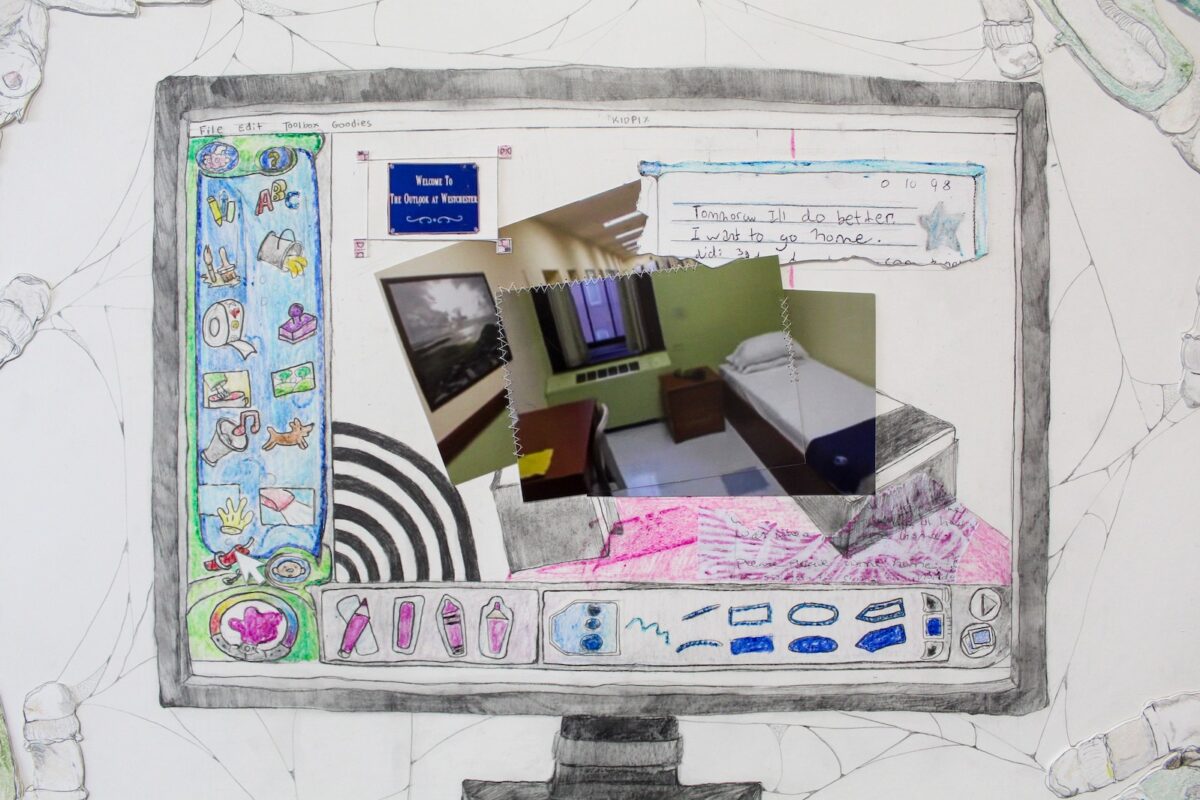
Why have you chosen this topic?
The topic didn’t arrive fully formed; instead, it revealed itself gradually through a combination of memory, reading, and practice. I began to realize that many of the environments I inhabited growing up shared a sense of estrangement or what I now understand as “airlessness.” Suzanne Scanlon and Shulamith Firestone gave language to that condition. Thematically, this research allows me to fold in my longstanding interests in psychoanalysis, feminist theory, and the politics of institutional care. It’s a way of making sense of personal experience while locating it within a broader lineage of thinkers, spaces, and systemic failures.
Although the initial body of work focused on my understanding of Firestone, reading her story and tracing her silences I ended up finding a kinship lineage of many women who were also institutionalized and who share in this creative unraveling. Unica Zürn became the first offshoot that pushed me to dig deeper. The work I’m making in response to her has ultimately culminated in a separate body of work for an upcoming solo show in June.
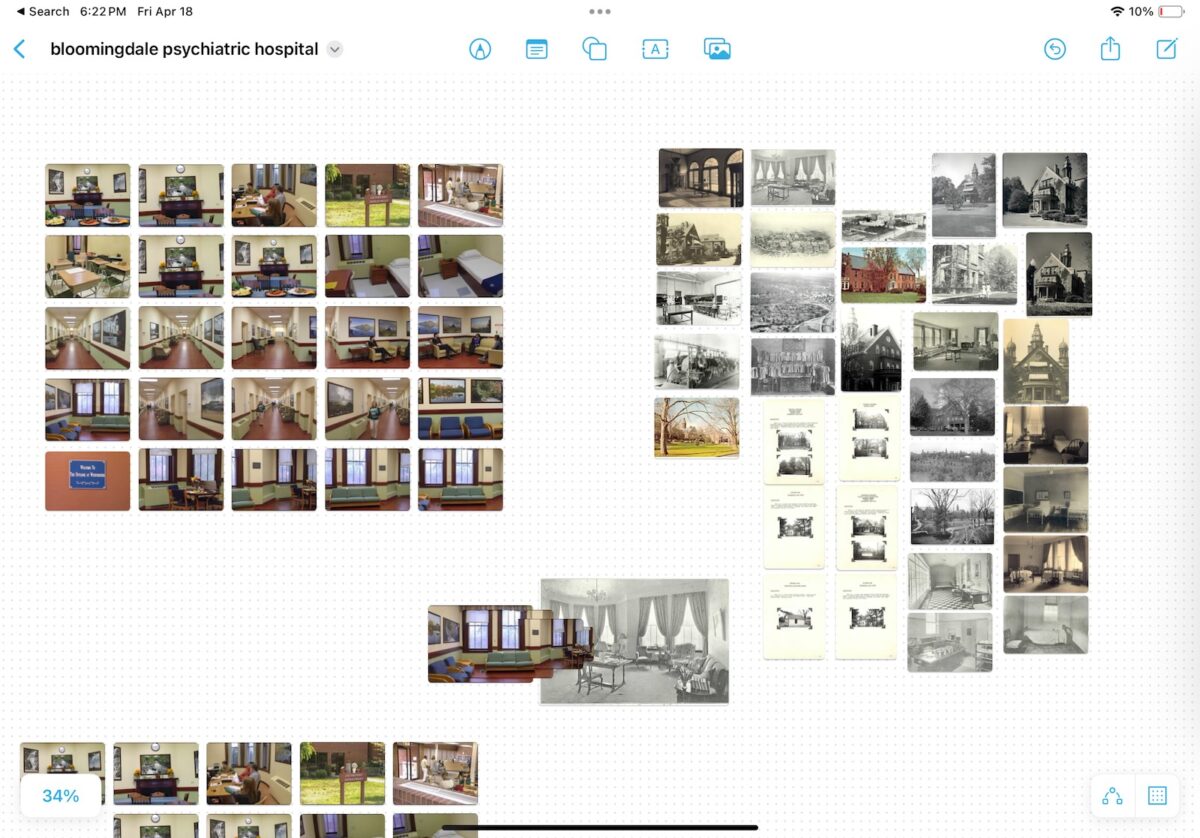
What research methods do you use?
The research is intentionally cross-disciplinary, non-hierarchical. I read across genres like memoir, feminist theory, psychoanalysis, internet forums, the barren landscape that now is Tumblr, scientific journals—and I let citation exist alongside poetic language, I play in the gutter, I follow footnotes and bibliographies like bread crumbs along a trail, i hyper focus on screenshots, other debris of a life online with the background hum, like the sound of fluorescent lights being crochet, the body engaging in research alongside my mind. I read while crocheting, and crochet while reading. When writing it is often through and around texts by people like Siri Hustvedt, Julia Kristeva, and Susan Sontag, allowing their ideas to permeate rather than dominate since the first-hand experience I get is from girl blogging subculture, sick people talking and shouting out for other sick people, I write like I would in my journal, like I do in my sketchbook, i cite my sources like I would for a research paper. I’m crediting @g0recide as I would Foucault.
My body also becomes part of the research apparatus (after all it is the thing engaging in everything) its habits, attachments, and repetitions. The methodology is both rigorous and instinctive. I am forever invested in what happens when “hard logic” (academic journals, analysis, philosophers) comes into contact with presumed soft logic (craft, diaristic first-hand account, associative thinking).
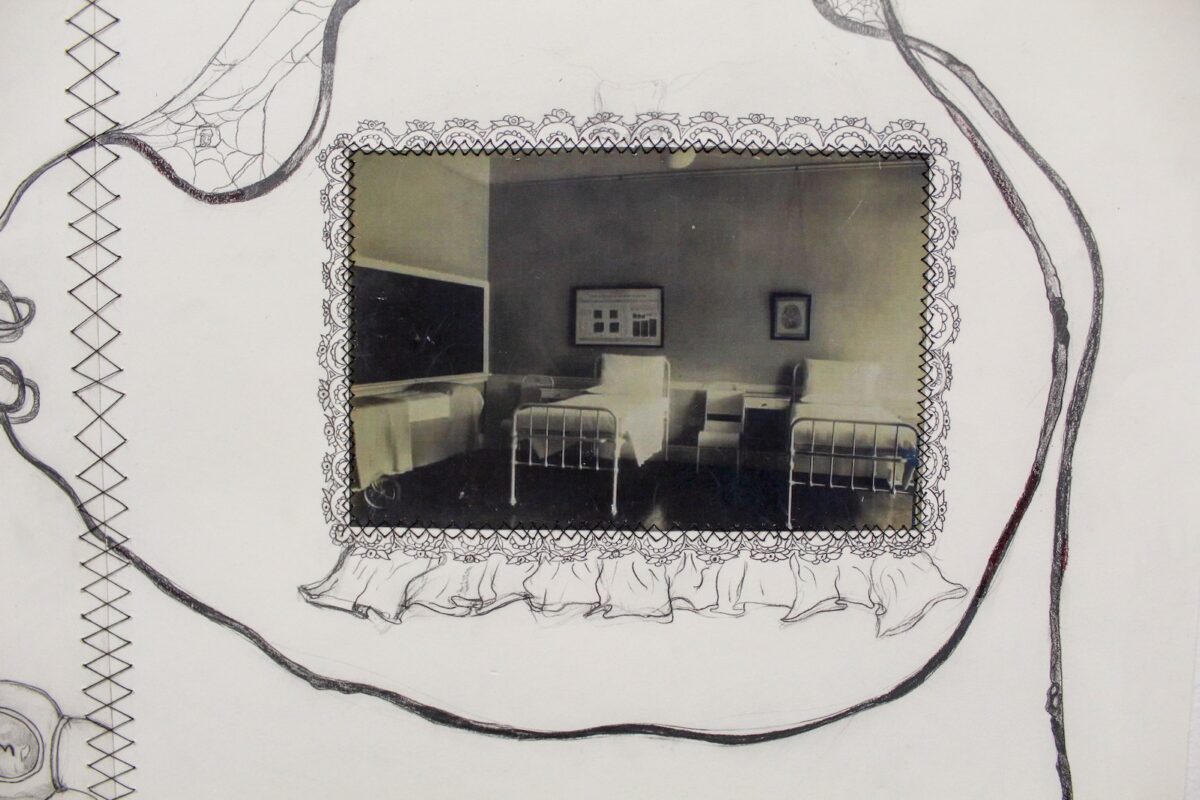
In what way did your research affect your artistic practice?
It collapsed the boundaries I had previously maintained between research and making. What started as reading to support my studio work eventually became a large component of the work itself. My writing, drawing and textile processes now function in dialogue, one holds the other in place, or undoes it. Psychoanalytic thought, in particular, has taught me to attend to gaps, repetitions, and transfers, both in theory and in artistic practice. I’ve become less focused on only producing finished objects and more invested in constructing objects which in turn have their own conversations amongst each other, amongst the reading, amongst the writing. This in turn results in through lines tieing them to larger conversations in the universe, in creating open-ended structures that can house contradiction, instability, and unresolvable questions.
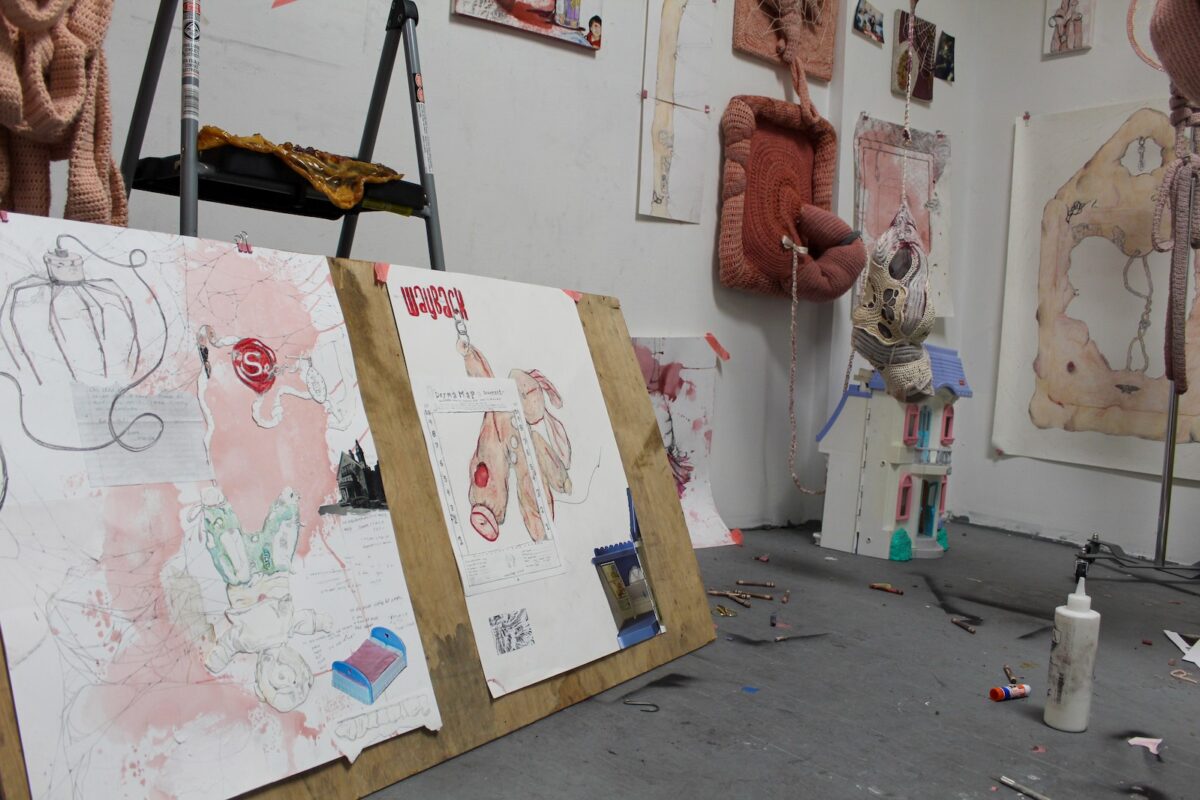
What are you hoping your research will result in, both personally and publicly?
Personally, I see the project as a way of building a psychological home, not to resolve things, but to hold them. It’s a Möbius strip of self-reflection turning back in on itself and then out toward the broader world.
Publicly, I hope it sparks curiosity—the way the Ology books sparked curiosity for me in the 2000s, or the way a pro-ana blog sparked it for me in the 2010s. I want it to be a place for people to fall, to safely unravel themselves. To have space to breathe and reflect within the artwork. To have substantive material to chew on. To undo what I’ve done and remake its materials into something all their own—something that reflects themselves, their lives, their struggles, their mundane. I want it to serve as a launch pad for their own self archival histories, their own curiosity and questioning of the systems which house their experiences.
Ultimately, the goal is to publish these books. To have these containers in the world. To be accidentally found in a library or bookstore, stumbled upon online, and inquired into further. To be feasted on, saved for later, let to rot, hidden and dredged up again. To know it’ll be there if you ever find yourself reminiscing.
